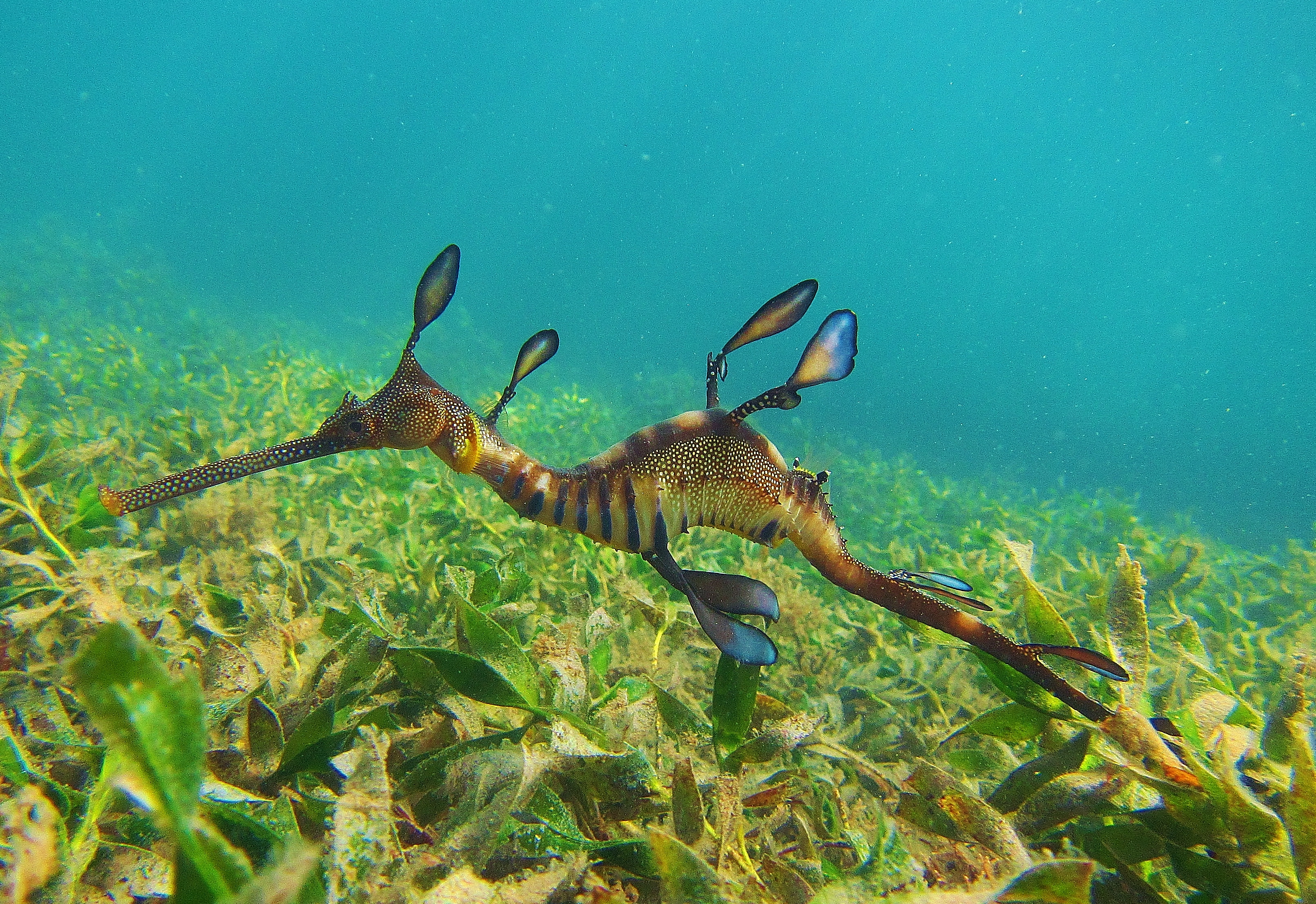The Great Barrier Reef might get all the attention, but it’s not the only reef brimming with marine life in Australia. A new, two-part live webcam lets you take a peek at life above and below the surface of a reef in Port Phillip Bay, south of Melbourne, Australia. The first cam lets you watch the marine life on a rocky reef, while a second camera lets you peer down at a large Australasian gannet colony. (See our note about viewing hours, below.)
The cameras are anchored on Pope’s Eye, a relic, unfinished defense structure built during the 1800s and now part of Port Phillip Heads Marine National Park. “Pope’s Eye is a jewel in the crown of Port Phillip Bay,” says Simon Branigan, a marine restoration coordinator with Nature Conservancy Australia who helped install the cameras. “Even though it’s man-made, the structure has been in place for many years so there’s a beautiful rocky reef habitat around it.” A popular dive and snorkel site, Pope’s Eye has some of the highest diversity and abundance of fish species in the bay.
Rocky reefs are just one of many habitats within Port Phillip Bay, including seagrass meadows and kelp beds. Shellfish reefs once covered up to 50 percent of the seabed, but the ecosystem has since collapsed due to dredging and pollution. As part of their Great Southern Seascapes program, Nature Conservancy Australia is restoring shellfish reefs within the bay by installing 360 tons of limestone over 600 square meters.
If you’re watching, keep an eye out for the western blue groper, a protected species that has only recently been re-discovered in the bay. Also look for the resident scalyfin, which Branigan says lives in a rocky outcrop close to the camera and can be seen defending its territory from other fish.
The above-water cam lets you see one of the few Australasian gannet colonies in the world that’s situated on a man-made structure. Found in the ocean waters of Australia and New Zealand, these seabirds are the largest species within the gannet family. They nest in large breeding colonies, with male and female pairs staying together for several breeding seasons.
A note on viewing hours: The cameras are only live during daylight hours in eastern Australia. Viewers in the United States should tune in around 7:30 or 8:00 a.m. Melbourne time, which is 5:30 p.m. US eastern time. Branigan says that the best viewing times are when the water is calm, about 3 hours before or after high tide. (Check tide charts for Port Phillip Bay here.)




Join the Discussion